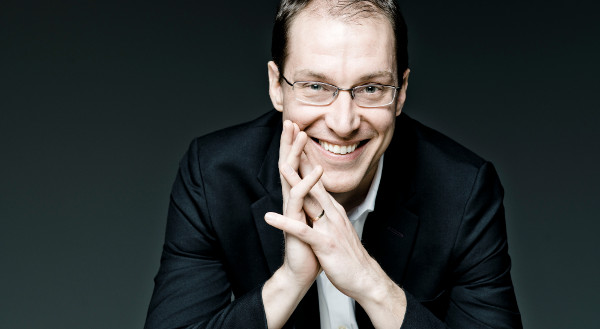20th century “Trailblazers” are new again with Chamber Music Society series debut

As part of its current 50th anniversary season, the Chamber Music Society of Lincoln Center has a subseries, “New Milestones,” which had its first event Thursday night in the Rose studio.
New music is nothing new for CMS, but the New Milestones idea is something else: Judging by Thursday night’s concert, the theme will be an exploration of some of the most important ideas in 20th century composition. In the series inaugural, “American Trailblazers,” that was the world of music that the great composer and teacher Henry Cowell opened up.
There was no Cowell on the program; instead there was music by composers who learned from Cowell directly (Ruth Crawford, John Cage) and indirectly (Elliott Carter), or who had no connection with Cowell (John Corigliano). From an intellectual and thematic standpoint, Corigliano — a relative conservative among radicals — didn’t belong. But CMS seemed to be looking for an excuse to schedule the world premiere of his oboe/cello duet, The Food of Love.
No complaints, though; as a sheer musical experience this was lovely. Oboist James Austin Smith and cellist Mihai Marica came together to play this supple and solid piece, a personal celebration that used a consonant polytonality to give it some weight.
The backstory that Corigliano related was as enjoyable as the music. It was commissioned by his friends Michèle and Larry Corash, the former instrumental in removing lead from gasoline while she was at the EPA during the Carter administration, the latter the developer of a test to detect HIV in the donated blood supply. They commissioned The Food of Love in celebration of their own 50th wedding anniversary, but even more they make a habit of commissioning new music whenever they have an important event to honor. The couple, in attendance, deserved and received as much applause as did the music.
Earlier, Smith and Marica played Crawford’s Diaphonic Suite, No. 4, music for two voices that pushed boundaries. Crawford was a brilliant systematizer, using pre-compositional organization to guide her finished results. Her music is neither dry nor academic, though; it has color, expression, and excitement. Though her catalogue is relatively small, she is a titan of modernism.
The Diaphonic Suites are exercises in dissonant counterpoint, yet the two voices are never far apart harmonically or structurally. Smith and Marica emphasized that kinship, playing with great unanimity of conception and purpose. The two voices ingeniously work in differing languages — without antagonism — to spell out music that is lively, fascinating, at times haunting. The musicians’ responsiveness to each other gave the music substantial energy.
Cages’s Sonatas and Interludes for Prepared Piano is, after 4’33”, his most famous work, though it’s performed much less often. Many fine pianists have played and recorded the piece, but it remains a specialized experience, in no small part because musicians and administrators need to be willing to stick screws, pieces of rubber, and other materials into the instrument’s strings —Steinways aren’t cheap.
But what made Gilles Vonsattel’s performance of selections from the piece — Sonatas I, II, V, the famous “Gemini” pair of XIV and XV, and XVI, with the Third Interlude in the middle — was hearing and seeing a concert pianist play this music. Vonsattel’s touch was superb, graceful and with fine and smooth gradations of dynamics. His rhythm in the swinging Sonata V was positively hip, and he was perfectly in tune with the zen expression of the work, the beautiful and mysterious “Gemini” music flowing through him and becoming a penumbra of sound and meaning he played within. To add to the experience, a camera was trained on the piano interior, and streamed images of the dancing screws and ringing strings, in real time, to a screen at the back of the stage.
Last was Carter’s Sonata for Flute, Oboe, Cello, and Harpsichord, from early in the stage of his career when he was leaving Americana behind and moving toward a complex mix of democratic voices and continuous development — one step beyond Crawford’s ideas in the Diaphonic Suite.
Flutist Tara Helen O’Connor introduced the piece by giving an excellent and clear demonstration of metric modulation, speeding up and slowing down over an unchanging pulse, a key part of the Sonata and a technique that Carter mastered.
It was the kind of hook that draws an audience that much farther into the performance and, with the other players joining in, a reminder of how spoiled we are by the Society’s musicianship. Carter’s sound lies tantalizingly just past a point that many listeners can easily grasp. But as the quartet played with energy — listening to each other, producing colorful timbres — and with love for their work, Carter’s complexity became embraceable. Uplifting is not a word often associated with him, but that’s how his Sonata capped a concert that had one feeling like modernism’s time is now.
The Schumann Quartet and soprano Tony Arnold perform Mozart, Berg, and Grieg, 7:30 p.m. Friday in Alice Tully Hall. New Milestones returns January 16 in the Kaplan Penthouse with music by Kaija Saariaho, Thomas Meadowcroft, and Stockhausen’s Kontakte. chambermusicsociety.org


